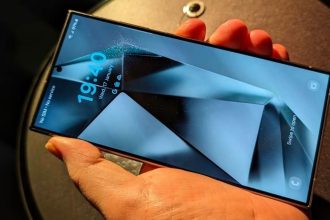The following is part of a series on brain-machine integration and biomechanical solutions to restore function to tissues damaged by disease, trauma, or time. This and the previous piece focus on wearable sensors and their immediate and future applications.
A new textile electronic system will allow for the free-form manufacturing of smart fabrics to a degree previously unreached. In our previous article, we discussed the implementation of smart wearable sensors for use in knee health monitoring. While the individual use case of these smart knee braces was very positive, there remains an issue. Large-scale manufacturing for smart fabrics remains unresolved. Each wearable sensor features smart e-textile material carefully developed in a lab. Compare this to standard fabric manufacturing, which yields several million tons annually.
Why should we be interested in smart fabrics and wearable technology? For some of the same reasons we may buy the latest smartwatch: convenient monitoring of health and fitness, including heart rate, sleep patterns, activity levels, and so on, while remaining comfortable and even stylish in quality made materials. Smart fabrics also implement a seamless convenience factor previously unseen, enabling well-being practices without clicking a button in day-to-day life.
In a recent paper in Science, Lee et al. demonstrate the first fully automated e-textile manufacturing process, including weaving and interconnection of fully operational textile electronic systems with multiple types of fiber devices within the same fabric.
E-textiles can have various fiber devices used for various purposes. As previously mentioned, the wearable sensor knee brace detects the motion of the knee, both the joint itself and the surrounding muscle, to monitor for the progression of arthritis and other ailments.
Lee et al. focused on the use of smart textiles for use in smart environments. For example, they describe a smart home with automated luminance modulation depending on sunlight intensity. For the entire process to be automated, the e-textile materials would need a photodetector, supercapacitor, field-effect transistor, and quantum dot light-emitting diode integrated into the fabric. Each must be flexible, thin enough to be woven, and sturdy enough to withstand the test of time.
For use in a single, not to mention thousands, an automated weaving system must be put in place. Lee et al. demonstrate a two-step process in their e-textile manufacturing process. First, the weaving itself is conducted by a programable weave, interlacing the electronic components with the standard material.
Once weaved together, the electronic components of the material remain disconnected. Interconnections are achieved by soldering silver adhesive to connection points and curing with an infrared laser.
The resulting smart material withstands tensile forces up to 600 meganewtons and electrical resistance of roughly 55 milliohms after 10,000 cycles. In other words, their smart textile could withstand the force caused by the weight of over 300 blue whales and over 20 times the electrical resistance of household copper wiring.
Lee et al.’s light-modulating e-textile has four phases: (i) idle, (ii) sensing, (iii) control, and (iv) output. Idle is when no sun ultraviolets are detected, and lights are off. Sensing is when ultraviolet radiation is detected, generating an output current, which becomes an input signal to the controller fiber. Control is when the current is delivered. Finally, the output is when quantum light-emitting diode lights are activated and modulated in conjunction with the degree of ultraviolet radiation detected.
When the sun is not out, the lights are off, as the assumption is that it’s night. When the sun is out but with low ultraviolet during mornings and evenings, the lights are brighter, as more light is needed to conduct activities. When ultraviolet is highest during the day, lights are dimmed to conserve energy.
While Lee et al. note that their light-detecting smart fabric could yield a variety of optoelectronic applications, such as solar energy storage and reallocation, it is their programmable weaving manufacturing that has widespread potential. At larger scales, smart fabrics could be used in many fields, such as physical therapies, as discussed with the smart knee brace, but also environmental quality monitoring, waste management, pollution mitigation, environmental mapping, or precision agriculture.
Smart fabric facilities may be used on an individual scale, for instance, fall detection for elderly people living on their own, or on the industrial scale, with smart robes in hospitals monitoring patients in a far less invasive fashion.
The possibilities for smart fabrics are only limited by how much we can produce and our own imaginations. We look forward to seeing how these revolutionary technologies are implemented into our daily lives sooner rather than later.
To read more of this series, please visit www.williamhaseltine.com
Read the full article here




